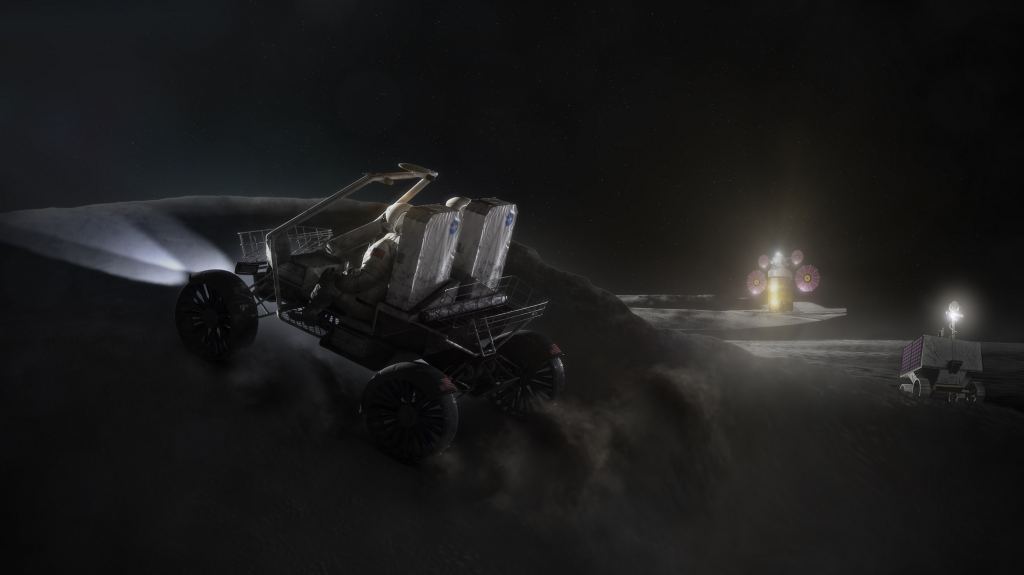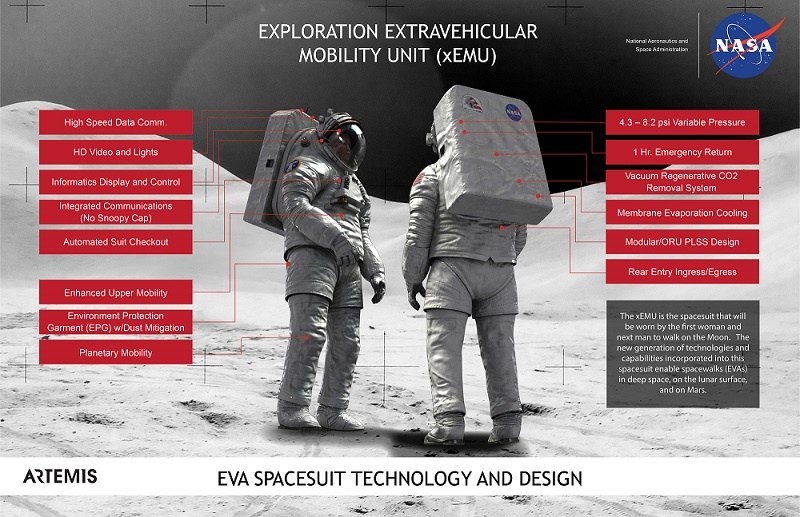When the Artemis III mission lands on the lunar surface in 2024, it will be the first time in over 50 years that astronauts will have set foot on the Moon. Unlike last time, where the Apollo missions left behind a flag and several science experiments, NASA hopes that Artemis will serve as a stepping stone towards the creation of a permanent human presence on the Moon.
A key part of this is the creation of an orbiting habitat and place for spacecraft to rendezvous, known as the Lunar Gateway. But equally important is the creation of a lunar base camp on the surface where astronauts will be able to hunker down between outings. Through the use of crewed and robotic missions, this base will help establish the infrastructure for a long-term, sustainable human presence on the Moon.
The habitat was the subject of a report titled, “Plan for Sustained Lunar Exploration and Development,” which was recently issued to the National Space Council (NSC). As the report summarizes, the Artemis program will lay the foundation for a sustained long-term presence on the Moon, new opportunities for research and experiments, and as a place to validate deep space systems that will be used to explore Mars.

As NASA Administrator Jim Bridenstine remarked in a recent NASA press release:
“After 20 years of continuously living in low-Earth orbit, we’re now ready for the next great challenge of space exploration – the development of a sustained presence on and around the Moon. For years to come, Artemis will serve as our North Star as we continue to work toward even greater exploration of the Moon, where we will demonstrate key elements needed for the first human mission to Mars.”
The core elements of this habitat would include technologies that allow for mobility and the ability of the astronauts to conduct more in the way of scientific research. Overall, three elements were emphasized, which included a Lunar Terrain Vehicle (LTV) that would transport crew around the landing zone. NASA recently submitted two Requests For Information (RFI), seeking proposals from industrial partners to come up with designs.
Second, there’s the Habitable Mobility Platform (HMP), which would allow crews to conduct journeys across the lunar surface lasting up to 45 days at a time. Third, there’s the Lunar Foundation Surface Habitat (LFSH), which would house as many as four crew members during shorter-duration missions to on the surface.
At the same time, astronauts working on the lunar surface would need to be able to test advanced robotics and other technologies identified by the Lunar Surface Innovation Initiative. This development portfolio emphasizes technologies that would enable human and robotic exploration on the Moon and future operations on Mars, with particular emphasis on the fields of ISRU and power systems.

For example, LTVs will be designed to carry multiple instruments, which will ISRU experiments to determine the availability of key resources (like oxygen and water ice) and whether or not they can be extracted. These resources could be used to produce fuel, water, oxygen gas, and building materials for lunar operations, thus reducing their dependence on resupply from Earth.
As noted, another key element to NASA’s future efforts is the Lunar Gateway, which will serve as a command and control module and a habitat for astronauts as they travel between the Earth and the surface of the Moon. The Gateway will also be used as a platform to conduct science and technology demonstrations around the Moon.
These include the ESA’s radiation instrument package and NASA’s space weather instrument suite, which were recently selected to be the first scientific instruments to be sent to the Gateway. Over time, NASA and its international and commercial partners will enhance the Gateway’s habitation capabilities and related life support systems as the prospect of a mission to Mars draws nearer.
The report also highlights how NASA will be sending robotic missions to the Moon as part of their Commercial Lunar Payload Services (CLPS) to study planetary processes and evolution, conduct astronomy experiments, and also scout for resources. Examples include the Volatiles Investigating Polar Exploration Rover (VIPER), which will study the terrain, metal, and ice resources around the Moon’s South Pole-Aitken Basin.

Rounding out NASA’s plans for a sustainable lunar exploration program, crewed missions to Mars, and future deep-space missions are such elements as the Space Launch System (SLS), the Orion spacecraft, the reusable Human Landing System (HLS) and the Exploration EMU (xEMU) spacesuit. The report emphasizes that all of these elements and the missions they will enable are crucial to NASA and the U.S.’ continued leadership in space:
“The United States is still the only nation to have successfully landed humans on the Moon and spacecraft on the surface of Mars. As other nations increasingly move out into space, American leadership is now called for to lead the next phase of humanity’s quest to open up the future to endless discovery and growth.”
Whereas the Apollo missions were an exclusive affair that was all about getting their first and leaving little behind (aka. “footprints and flags”), NASA’s will be returning to the Moon with international and commercial partners. And this time around, all parties are committing to building the infrastructure that will allow us to stay.
Combined with the ESA’s ambitious plans to create an International Moon Village, as well as Russia and China’s plans for a lunar base in the southern polar region, it is clear that a permanent human presence on the Moon will be an international affair.
Further Reading: NASA, Plan for Sustained Lunar Exploration and Development (PDF)


NASA’s Artemis webpage looks highly ambitious and promising. However, the launch date keeps getting pushed back, and the general sense that I get- both from reading myself and even talking to people who worked at NASA- is that the program is already falling behind commercial space flight. Yet, there are so many hundreds of billions of dollars invested, that they will have to launch the Space Launch System at least once to justify it.
It’s upsetting to hear, but I will be surprised if Artemis II and Artemis III ever come to fruition.